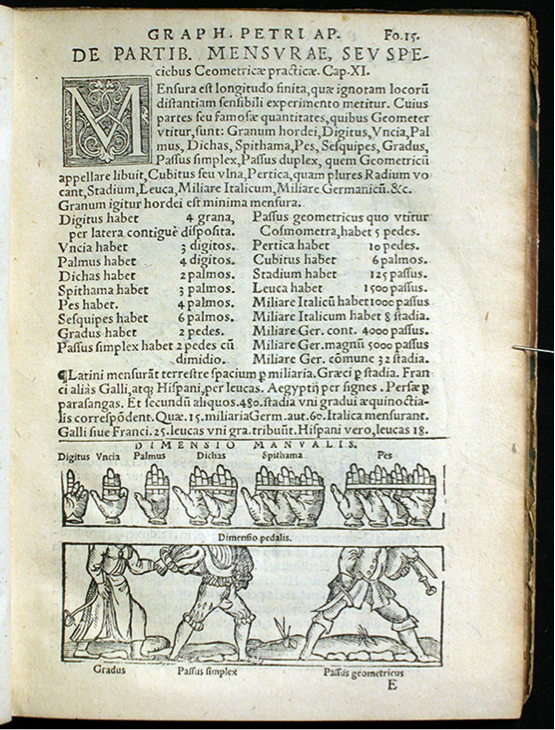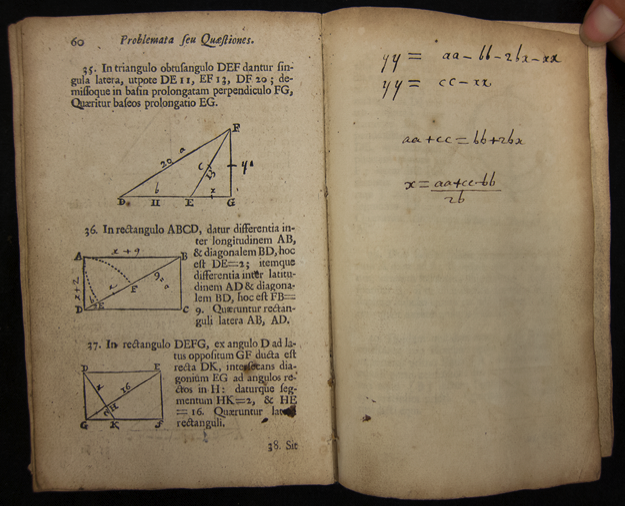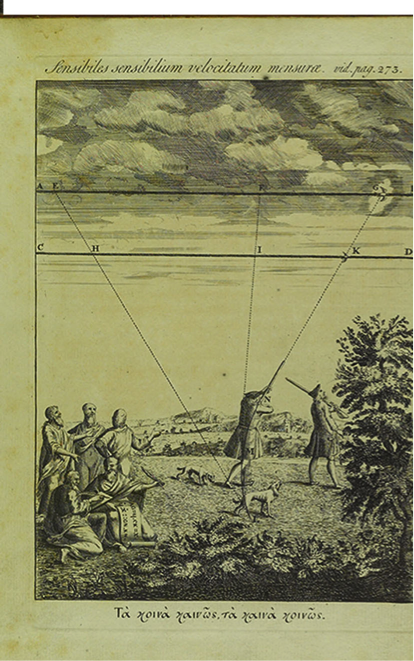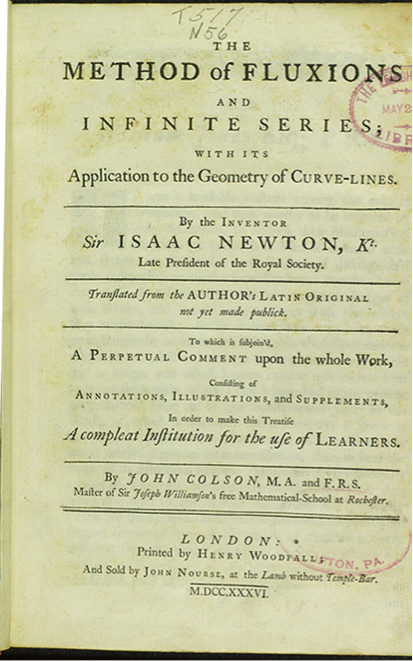- About MAA
- Membership
- MAA Publications
- Periodicals
- Blogs
- MAA Book Series
- MAA Press (an imprint of the AMS)
- MAA Notes
- MAA Reviews
- Mathematical Communication
- Information for Libraries
- Author Resources
- Advertise with MAA
- Meetings
- Competitions
- Programs
- Communities
- MAA Sections
- SIGMAA
- MAA Connect
- Students
- MAA Awards
- Awards Booklets
- Writing Awards
- Teaching Awards
- Service Awards
- Research Awards
- Lecture Awards
- Putnam Competition Individual and Team Winners
- D. E. Shaw Group AMC 8 Awards & Certificates
- Maryam Mirzakhani AMC 10 A Awards & Certificates
- Two Sigma AMC 10 B Awards & Certificates
- Jane Street AMC 12 A Awards & Certificates
- Akamai AMC 12 B Awards & Certificates
- High School Teachers
- News
You are here
Pantas’ Cabinet of Mathematical Wonders: Images and the History of Mathematics – Selecting Images – Early Books
Finding appropriate images for instruction may require a more formal search and research on the part of the instructor. In an instance where I desire to talk on the subject of linear measure and would like to use actual examples of societally devised units of measure (Figure 7), taken from the German humanist Peter Apian’s Cosmographia [1524], would provide a learning inducement.

Figure 7. Definitions of various measurements in Peter Apian’s 1524 Cosmographia. (Image presented courtesy of History of Science Collections, University of Oklahoma Libraries. You may use this image in your classroom; all other uses require permission from the University of Oklahoma Libraries.)
It illustrates and demonstrates the use of fingers and feet to designate distance measures of the 16th century, ones not usually known or recognized by the modern viewer: one foot or pes equals four palmos (singular palmus) or palms of the hand; a leuca, or league, the distance a person can walk in one hour, equals 1500 passus or paces; and an Italian military mile is 1000 paces, whereas a German military mile comprises 4000 paces.
Young children enjoy duplicating finger postures as illustrated in Luca Pacioli’s Summa [1494] and popular in the Middle Ages to designate numbers.
Another image that I have employed with great success in working with secondary school students is a page from the Swiss mathematics teacher Johann Alexander’s algebra book, Synopsis Algebraica [1693]. (See Figure 8.)

Figure 8. Problems about triangles from Johann Alexander’s Synopsis Algebraica. (Image presented courtesy of Archives and Special Collections, Dickinson College, Carlisle, Pennsylvania. You may use this image in your classroom; all other uses require permission from Archives and Special Collections, Waidner-Spahr Library, Dickinson College.)
In the history of mathematics texts, this book is rather unique; it is a text/workbook where instruction is provided on one page and the facing page is left blank for notes and computations. It is the first such book of this kind that I know of. On page 60, three geometric situations are given requiring algebraic solutions. Although the book, including its exercises, is written in Latin, an astute student of today can understand the problems. A student from the 17th century offered a solution for problem 35. Is it correct? My audience finds a mistake: The equation \(aa+cc=bb+2bx\) should read \(aa-cc=bb+2bx\) and the solution \(x=\frac{aa-bb-cc}{2b}\). Given the values for \(a,\) \(b,\) and \(c,\) this yields \(x=5\) and \(y=12,\) which might have been guessed at the start. Then I ask the audience to solve the remaining problems; they are thrilled to be solving “400-year-old problems.”
Throughout history, millions of such diagrams and illustrations have been devised to promote mathematical learning and understanding. They can be resurrected to serve immediate teaching needs and, further, they bear the added feature of an historical dimension, which increases their attraction for the modern viewing audience.
One last example of an image-inspired encounter: A calculus student in a colleague’s class was directed to an image of Isaac Newton’s The Method of Fluxions and Infinite Series with its Application to the Geometry of Curved Lines [1736]. She was enthralled to see the actual book that introduced calculus, albeit with fluxions, to her historical peers and instigated the mathematical field of analysis. Interpreting the frontispiece (see Figure 9) reveals an interesting story. The scene shows two country gentlemen hunting birds. They judge the flight of the birds and allow a lead in their aim; that is, they judge the velocity correctly. Just below and to the left of the hunters is a group of classical philosophers debating the action. The literal translation for the Latin inscription pertaining to the hunters is: “Velocities perceived by the senses are measurable by the senses.” The lower Classical Greek reads, “What was common then is the same now. [Things don’t change].” John Colson, who translated Newton's work (from Latin to English) and edited the book, was mindful of the controversies surrounding the calculus, particularly George Berkeley’s charges in The Analyst (1734).

Figure 9. Frontispiece of Isaac Newton’s 1736 The Method of Fluxions and Infinite Series with its Application to the Geometry of Curved Lines. (Image presented courtesy of Lehigh University. You may use this image in your classroom; all other uses require permission from the Special Collections staff, Linderman Library, Lehigh University.)
But my colleague's calculus student was more interested in another aspect of the book. Reading the title page (see Figure 10), she was prompted to investigate the circumstances resulting in the appearance of this text.

Figure 10. Title page of Isaac Newton’s 1736 The Method of Fluxions and Infinite Series with its Application to the Geometry of Curved Lines. (Image presented courtesy of Lehigh University. You may use this image in your classroom; all other uses require permission from the Special Collections staff, Linderman Library, Lehigh University.)
The book was attributed to Newton as the author but was actually composed by John Colson after Newton’s death. “Who was Mr. Colson and what was his association with Isaac Newton?” “Why didn’t Newton himself publish the book while he was alive?” Such questions and the resulting revelations supplied by their answers add much to the understanding of how mathematics is developed, transmitted, and refined.
Of course, before introducing an historical image to a class, the instructor herself or himself must be historically knowledgeable about the significance of the item in question.
Frank J. Swetz (The Pennsylvania State University) , "Pantas’ Cabinet of Mathematical Wonders: Images and the History of Mathematics – Selecting Images – Early Books," Convergence (May 2015), DOI:10.4169/convergence20150502




